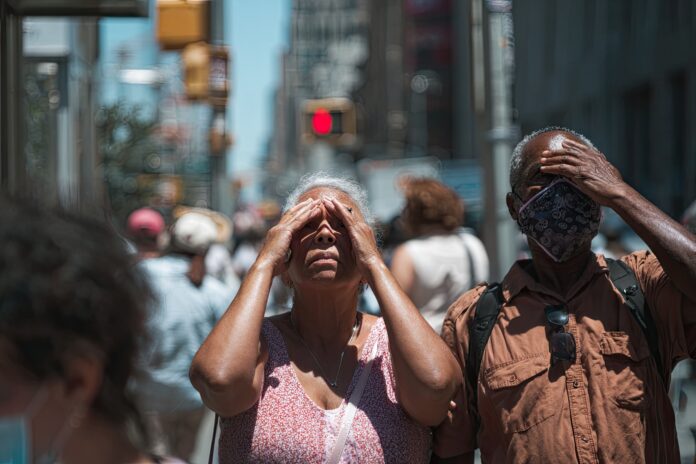Extreme Heat and Mental Health: A Global Concern Escalates
Extreme heat and mental health are now at the forefront of global public health discussions, drawing increasing concern from scientists, urban planners, and healthcare professionals. Most importantly, the psychological impact of heatwaves is only starting to gain appropriate recognition. Traditionally, when we think of heat, we focus on dehydration, heat stroke, and other physical health effects. However, research and lived experiences are making it clear: our minds are suffering in the heat, too.
Why Extreme Heat and Mental Health Are Deeply Linked
To grasp the magnitude of this connection, we must first understand how rising temperatures change the way we feel and behave. Because our brains depend on stable environmental conditions, excessive heat can disrupt mood-regulating neurotransmitters. Sleep disturbances become common as nighttime temperatures climb, triggering irritability and anxiety. Studies cited in The Lancet Planetary Health show marked increases in emergency room visits for mental distress during heatwaves.
Besides that, populations living in areas with little infrastructure for cooling—like air-conditioning or green spaces—have an even higher risk of adverse outcomes. A recent review in National Institue of Health confirms this: for every degree Celsius rise in temperature, there’s an uptick in suicide rates, psychiatric hospitalizations, and confirmed cases of aggression or violence.
Who Bears the Brunt of Climate-Induced Psychological Stress?
Extreme heat and mental health crises do not affect everyone equally. Vulnerable groups include:
- Children and Adolescents: Their developing brains are more sensitive to environmental stressors.
- Elderly Individuals: Age-related cognitive decline and isolated living situations worsen the risks.
- People with Pre-existing Mental Illness: Those already managing anxiety, depression, schizophrenia, or bipolar disorder often experience relapse or heightened symptoms in heat.
- Economically Disadvantaged Communities: These populations may lack resources for cooling or proper healthcare access, compounding the crisis.
Research also highlights that medications such as antipsychotics and antidepressants can impair the body’s ability to regulate heat and hydration, creating a vicious cycle of worsening symptoms.
The Urban Heat Challenge: Cities Under Pressure
Urban environments are uniquely challenging when it comes to extreme heat and mental health. Concrete, traffic, and dense populations create “urban heat islands,” concentrating heat and increasing physical discomfort. Moreover, the stress of noisy, crowded settings can amplify feelings of anxiety and agitation. Limited access to shaded parks or reliable air conditioning leaves city dwellers especially exposed.
Because of this, city planners are urged to prioritize equitable access to cooling centers, green rooftops, and community spaces for psychological relief.
Heatwaves and the Isolation Effect
Heatwaves often push people indoors for longer stretches, especially vulnerable groups like the elderly. The resulting social isolation can heighten loneliness, depression, and other mental health conditions. For those already feeling marginalized, extended periods of isolation can trigger crisis points, deepening reliance on under-resourced mental health services.
A Healthcare System Unprepared for Dual Threats
Healthcare infrastructures face immense pressure in extreme heat. Already stretched thin, many are ill-equipped to manage surges in both physical and psychological complaints. In many low- and middle-income regions, mental health services are minimal, underfunded, or stigmatized. Therefore, as extreme heat events escalate, the risk of overwhelming healthcare providers becomes all too real.
Moreover, recent events such as the 2023 global heatwaves have demonstrated how inadequately most healthcare systems respond. Emergency rooms become overcrowded, while community case managers struggle to check on isolated or vulnerable citizens.
Climate Change: The Worsening Threat
According to the World Health Organization, climate change is not just an environmental issue. It is a growing public mental health concern as well. Prolonged droughts, wildfires, and food insecurity induced by global warming further contribute to chronic stress, anxiety, and uncertainty about the future. In regions regularly hit by extreme heat, young people are increasingly experiencing eco-anxiety and climate grief. This psychological toll can have lifelong implications if left unaddressed.
What Practical Steps Can Communities and Individuals Take?
Addressing extreme heat and mental health challenges demands action from all sectors of society. Globally, integrating mental health into national climate adaptation strategies is essential. Locally, some immediate measures include:
- Public Cooling Centers: Make safe, air-conditioned spaces available in every community, especially for those at highest risk.
- Awareness Campaigns: Distribute information about the symptoms of heat-related mental stress and how to access help.
- Expanded Telehealth Services: Remote counseling and mental health hotlines should be mobilized during heatwaves.
- Community Outreach: Check on neighbors, friends, and relatives, especially those who live alone or lack support networks.
- Policy Advocacy: Support policies aiming to green urban environments, reduce emissions, and ensure affordable access to cooling technologies.
On a personal level, it’s crucial to monitor and care for your own mental wellbeing during high-temperature periods. Prioritize hydration, keep living spaces cool, maintain social connections, and don’t hesitate to seek medical advice for persistent symptoms.
Innovation and Technology: A Ray of Hope
Fortunately, some countries and organizations are piloting innovative solutions to address this crisis. Mobile apps now send heat warnings and self-care reminders, while virtual peer support groups help people share coping strategies. In developed cities, urban planners are using satellite heat mapping to guide the placement of shaded bus stops and cooling pathways. These interventions demonstrate that, with determination and creativity, communities can reduce the mental health burden of extreme heat.
Conclusion: Acting Before the Next Heatwave
As climate patterns continue to shift, the mental health effects of extreme heat will grow in scale and urgency. Because the world isn’t fully prepared, delayed action means more suffering and greater pressure on health systems. By recognizing this silent crisis now, societies can integrate mental health into their climate responses—protecting vulnerable populations, strengthening social bonds, and ensuring healthier futures. The intersection of extreme heat and mental health is a defining challenge of our era. Effective action today will shape the wellbeing of tomorrow’s communities.
For further reading, see resources from the Centers for Disease Control and Prevention and the World Health Organization on mental health and climate change.



